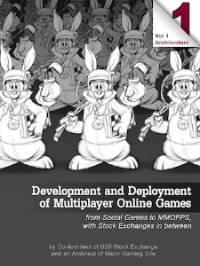The email sent will contain a link to this article, the article title, and an article excerpt (if available). For security reasons, your IP address will also be included in the sent email.

Sergey Ignatchenko continues his excellent book series with a new chapter on databases. This is a guest repost.
The idea of single-write-connection is used extensively in the post, as it's defined elsewhere I asked Sergey for a definition so the article would make a little more sense...
As for single-write-connection - I mean that there is just one app (named "DB Server" in the article) having a single DB connection to the database which is allowed to issue modifying statements (UPDATEs/INSERTs/DELETEs). This allows to achieve several important simplifications - first of all, all fundamentally non-testable concurrency issues (such as missing SELECT FOR UPDATE and deadlocks) are eliminated entirely, second - the whole thing becomes deterministic (which is a significant help to figure out bugs - even simple text logging has been seen to make the system quite debuggable, including post-mortem), and last but not least - this monopoly on updates can be used in quite creative ways to improve performance (in particular, to keep always-coherent app-level cache which can be like 100x-1000x more efficient than going to DB).
After we finished with all the preliminaries, we can now get to the interesting part – implementing our transactional DB and DB Server. We already mentioned implementing DB Server briefly in Chapter VII, but now we need much more detailed discussion on this all-important topic.
 “Transactional / operational DB is a place where all the automated decisions are made about your game (stock exchange, bank, etc.)First of all, let’s re-iterate what we’re speaking about. Transactional/operational DB is a place where all the automated decisions are made about your game (stock exchange, bank, etc.).
“Transactional / operational DB is a place where all the automated decisions are made about your game (stock exchange, bank, etc.)First of all, let’s re-iterate what we’re speaking about. Transactional/operational DB is a place where all the automated decisions are made about your game (stock exchange, bank, etc.).
It stores things such as player accounts, with all their persistent attributes etc. etc.; it also stores communications related to payment processing, and so on, and so forth. And “DB Server” is our app handling access to DBMS (as noted in Chapter VII, I am firmly against having SQL statements issued directly by your Game Servers/Game Logic, so an intermediary such as DB Server is necessary).
As discussed above, ACID properties tend to be extremely important for transactional/operational DB. We don’t want money – or that artifact which is sold for real $20K on eBay – to be lost or duplicated. For this and some other reasons, we’ll be speaking about SQL databases for our transactional/operational DB (while it is possible to use NoSQL for transactional/operational DB – achieving strict guarantees is usually difficult, in particular because of lack of multi-object ACID transactions in most of NoSQL DBs out there, see discussion in [[TODO]] section above).
And now, we’re finally ready to start discussing interesting things.
Multi-Connection DB Access














 Return to Article
Return to Article